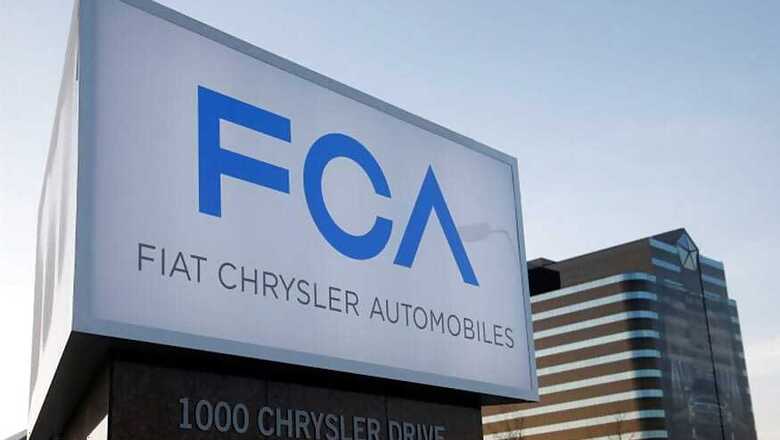
views
Fiat Chrysler Automobiles (FCA) on Monday proposed merging its business with French rival Renault which, if accepted, would create the third largest global automaker with 8.7 million in annual vehicle sales--larger than General Motors (GM) and lower than Volkswagen and Toyota. The €32.6 billion all-share merger, which would see FCA and Renault own 50% of the business, can change the dynamics of the global automotive industry. As Fiat and Renault decide on the deal, here’s a list of the five most significant mergers and acquisitions (M&As) in the global auto sector that changed the face of the auto industry.
1) Daimler-Benz and Chrysler in 1998 -
In a so-called “Merger of Equals”, according to its then CEO and architect Jürgen E. Schrempp, Daimler-Benz AG and US-based automobile manufacturer Chrysler Corp., the smallest of the main three American automakers, merged in 1998 and formed DaimlerChrysler AG. Valued at $38 billion, it was the world's largest ever cross-border deal.
The merger was quarrelsome with lawsuits from investors over whether the transaction was a ‘merger of equals’, or if it, in fact, was a Daimler-Benz takeover of Chrysler. A class action investor lawsuit was settled in August 2003 for $300 million, whilst another lawsuit by billionaire investor Kirk Kerkorian was dismissed in April 2005. The transaction claimed the job of its architect, Jürgen E. Schrempp, who resigned at the end of 2005 in response to the fall of the company’s share price.
In the end, Daimler-Benz agreed to sell the Chrysler division in May 2007 for $6 billion. Chrysler reported losses of $1.5 billion, and announced its plan to lay off 13,000 employees in mid-February 2007, closed a major assembly plant and reduced production of other plants in order to restore profitability by 2008. Chrysler filed for bankruptcy in 2009, which lead to the Fiat Chrysler merger.
2) Fiat and Chrysler in 2009 -
This merger dates back to 2009 after Chrysler had filed for Chapter 11 bankruptcy reorganization on 30 April 2009. On 10 June 2009, Chrysler broke out of the bankruptcy proceedings with the United Auto Workers pension fund, Fiat and the US and Canadian governments as principal owners.
Throughout the next few years, Fiat gradually acquired other parties’ shares to take majority ownership of the company, and on 21 January 2014, Fiat completed the acquisition of the remaining 41.5% from the United Auto Workers, making the Chrysler Group a wholly owned subsidiary. In May 2014, Fiat Chrysler Automobiles was established by merging Fiat into the company. This was completed in August 2014. Chrysler Group remained a subsidiary until 15 December 2014, when it was renamed FCA US LLC, to reflect the Fiat-Chrysler merger.
3) Tata Motors Ltd’s acquisition of Jaguar and Land Rover brands from Ford Motors in 2008 -
It was on 2 June 2008 that Tata Motors acquired the Jaguar and Land Rover (JLR) businesses from Ford Motor for a net consideration of $2.3 billion, as first announced on 26 March 2008, in an all-cash transaction. For Tata Motors, it was an opportunity to step into the big league of global automakers. Ford Motors, amid struggles for its own survival, sold the iconic brand for a billion dollars less than what it had originally paid.
JLR thrived after the acquisition, but so did Tata that benefited from manufacturing sites in Europe and implementation of state of the art R&D centres into their core businesses. However, today’s scenario is a little different. Following Brexit concerns, slowing demand for diesel-powered cars and a general slowdown in China, 2018 turned out to be one of the toughest years for JLR, with the firm posting a £3.6 billion loss, the largest in its history. However, Tata Sons chairman N. Chandrasekaran told investors recently that JLR’s turnaround plan has started showing results and the financial stress on the firm should reduce going ahead.
4) Nissan and Mitsubishi Motors in 2016 -
Nissan purchased a 34% stake in Mitsubishi at a cost of around £1.5 billion. The move made Nissan the largest shareholder in the ailing brand, with Carlos Ghosn taking the helm as CEO of Nissan and Mitsubishi. By adding Mitsubishi into the Renault-Nissan equation, the alliance now produces 10 million vehicles per year, bringing it into the third place in the automotive world, only behind Toyota Motors and Volkswagen Group, and ahead of GM.
5) Volkswagen and Porsche in 2012 -
In December 2009, Volkswagen AG bought a 49.9% stake in Porsche AG in the first step towards an ‘integrated automotive group’ with Porsche. The merger was scheduled to take place during the course of 2011 but got delayed due to court battles and divided families. Finally, in 2012, the Volkswagen group announced they would wrap up remaining 50.1% of Porsche for $5.58 billion.

















Comments
0 comment